While I have also completed the race distance a half-dozen times as a pace bunny, charity effort or as part of a multiday event or ultramarathon, my fourteen more typical marathons have exclusively been run hard in search of the sometimes-elusive PB. Results can be split down the middle for me at this point – I have had 7 PBs and 7 mornings that have varied from disappointing but enjoyable to crushing to nightmares.
Based more on the latter than the PBs, here are my tips that may help you attain the result you are capable of without avoidable off-days:
Train at Your Race Pace – While I assume you are getting in the Long Run that should be the key workout of your week, try also to get in a weekly or biweekly run at your Goal Race Pace during tired training weeks. Having done a few runs at this pace and stride length will help you late in your Marathon. Distance of this run can progress to 10 Miles 3 weeks out from race day.
Consider Lightweight Trainers – Even if you need a lot of cushioning throughout the bulk of your training, you may be able to use the lighter weight shoes you may have used in Race Pace runs for your Marathon after a taper has healed up minor injuries. Personally I use Mizuno Wave Precisions (now Saynonaras) for speedwork and races, including Marathons, versus Wave Riders for Long Runs. While only 2 mm less cushioning, I find that the lighter shoe helps me keeps my form better late in distance races, making that elusive goal Race Pace easier to maintain.
Taper – It may not feel right or may make you crazy but heal those muscles with a taper and allow them to store glycogen with little running at all the last 2-3 days. A taper can vary from 10-21 days but 7 days out your mileage should be more-than-halved, with off-days self-prescribed if any hint of injury.
Know Your Course – Course profile and weather conditions can have a severe impact on your day and potential performance. Consider lowering your expectations if hot, you may find your effort is higher at given paces as temperature increases above 10 degrees Celsius. Know where headwind can be expected, run with a pack into any significant wind, run with a pace group if severe. I tend to stay away from pace groups otherwise – in additions to bottlenecks at aid stations, I find that pace groups can struggle to run tangents. And yes, run tangents. Don’t be influenced by the pack if they are staying to the right side of a closed road as if driving, the course is measured inside corner to inside corner and that is where you should run.
Maximize Glycogen – Carb-load 3-4 days, and up to a week, before the race. Pasta, fruits, juices, cereals, rice, breads, granola. Thai food typically does not contain dairy and is a great option if you must buy take-out and refrigeration is a lacking in your hotel room or as you drive.
Race Morning – Know your ability to handle pre-race jitters. If you get jitters, then know exactly where you need to go. Consider throw-away clothes and carrying only a quarter for a pay phone, hotel key card, subway token or fifty-dollar bill for a cab instead of carrying and lining up to check a bag. Use the bathroom as a last stop before the start corral. Line up with similarly-paced runners.
Plan to Stay Hydrated – You need to keep your organs working optimally and avoid cramping so hydration is key, particularly on hot days. If you are a five-hour marathoner or quicker, it is unlikely you can overhydrate to the point of any medical risk so make sure to drink consistently. A good approach to stay out of the bathroom is to stop drinking ninety minutes before gun time. Resume drinking with a throwaway bottle of sports drink a minute or two before gun. This will be late enough that you will sweat out the liquid and is a last chance to drink without your mouth a moving target. If hot, consider salt pills to retain electrolytes and help water absorption.
Carry the Drug Store – Carry Tums, Salt Pills, Asthma Inhaler, anything you may need. You already saved the two ounces with those lightweight shoes.
Know Where Your Calories Will Come From – If you have carb-loaded properly and run an even and appropriate pace, you will start with glycogen for 30K at Marathon Pace. You need calories for the final 12.2K and may want to split your calorie intake evenly with gels and sports drink. As a 180-pound male, for example, I need 100 calories per K and take in 610 calories each from gels and sports drinks to get my 1,220 calories. Know where your gel stations are, these are typically very limited. I carry gels sufficient to cover my planned needs, aid station planning is usually well executed but not 100%. No need to carry sports drink or water unless you have allergy concerns – even if an aid station or two is our of liquid, it should leave at least a dozen stations for you to enjoy.
Consider Caffeine – One can consume caffeine in from various sources pre-race and/or supplement with caffeinated gels midrace. Some studies have suggested caffeine can help delay the feeling of fatigue and exhaustion. Conversely, some athletes find that coffee pre-race can send them to the restroom mid-race and that jumbo can of energy drink comes with undesirable carbonation. I will leave research on coffee pre-empting or causing the need for bathroom breaks for readers to determine themselves but my preference is to take a Five Hour Energy a few minutes before race time. I am not sold on whether this does delay exhaustion but it is neutral or better in that regard. The primary benefit I find is alertness 2.5 hours into the Marathon and later when the body is worn, the ability to sharply consider and make pacing adjustments at this point is invaluable. I wouldn’t implement this one without using at a shorter distance first, marathoning itself can cause GI distress before gels and caffeine are added to the mix.
Choosing a Race Pace – Unless this is your second or third marathon, many years since your last marathon or you have a reason to expect significant improvement, remember that race time improvement is difficult. Going out at current PB pace, with potential to pick up pace in the second-half, is advisable. Your most efficient race will be an evenly-paced effort (or even effort if hilly.) Every minute run too quickly in the front half can cost you three to five minutes in the back half if you have chosen a pace that is significantly too quick. If still sold that your Marathon PB is soft and will be crushed, you should not be any quicker than 0:10/K slower than a solid Half Marathon PB. And most runners with full-time jobs would find 0:15/K slower a terrific result. I am at 0:17/K and just fine…I want to improve at both distances.
Do Not Run Quicker Than Your Selected Pace Early – After tapering you will feel great. Your Marathon Pace that was life and death to keep up for 10 miles in training will feel easy. Don’t speed up, enjoy the ease. Keep remembering that race time improvement is difficult. Police yourself with your GPS.
Keep Cool – Run on the shady side of the road where an option. The course is not a palace – while all gel wrappers and other garbage should be held until aid stations on every occasion, you can spill liquid as needed. You need to keep cool and keep blood going to your muscles rather than to cool your skin. So run through lawn maintenance sprinklers that are shooting a bit far and onto the road. And use water at aid stations. My personal cooling method is that if it sunny and 12 Celsius or warmer, or 15 Celsius or warmer, I’m grabbing a sports drink to drink and a water to dump on my head at each aid station. A warning on this approach is that you should have applied Body Glide or another lubricant on any spots that are commonly at chafing risk.
In Race – Check and adjust your pace, hydrate, take a gel, take a salt pill, thank the volunteers, high-five the cheering kid. Repeat. If you feel like a bonk may be coming, slow by 0:10/K and take on calories quickly. If you feel cramping, take on salt pills and water or sports drink.
Good luck in training and on race day. It can all go well…while not a PB and while my wheels are modest, below (photo courtesy of Waterloo Running Series) is the day I won a Marathon stage in a multiday race after passing the leader at 37K. Proper pacing in-race on that day was the enabler.




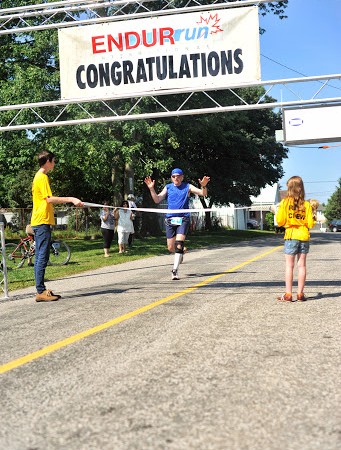
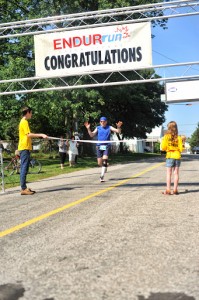

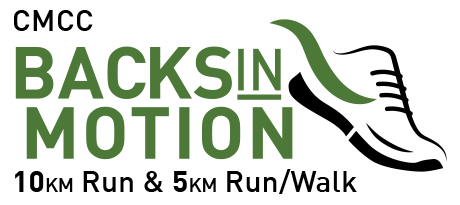



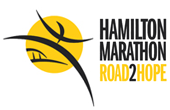







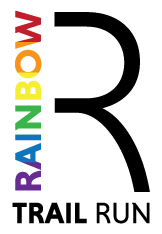



Great job Dave. Many helpful hints to avoid making the controllable mistakes.